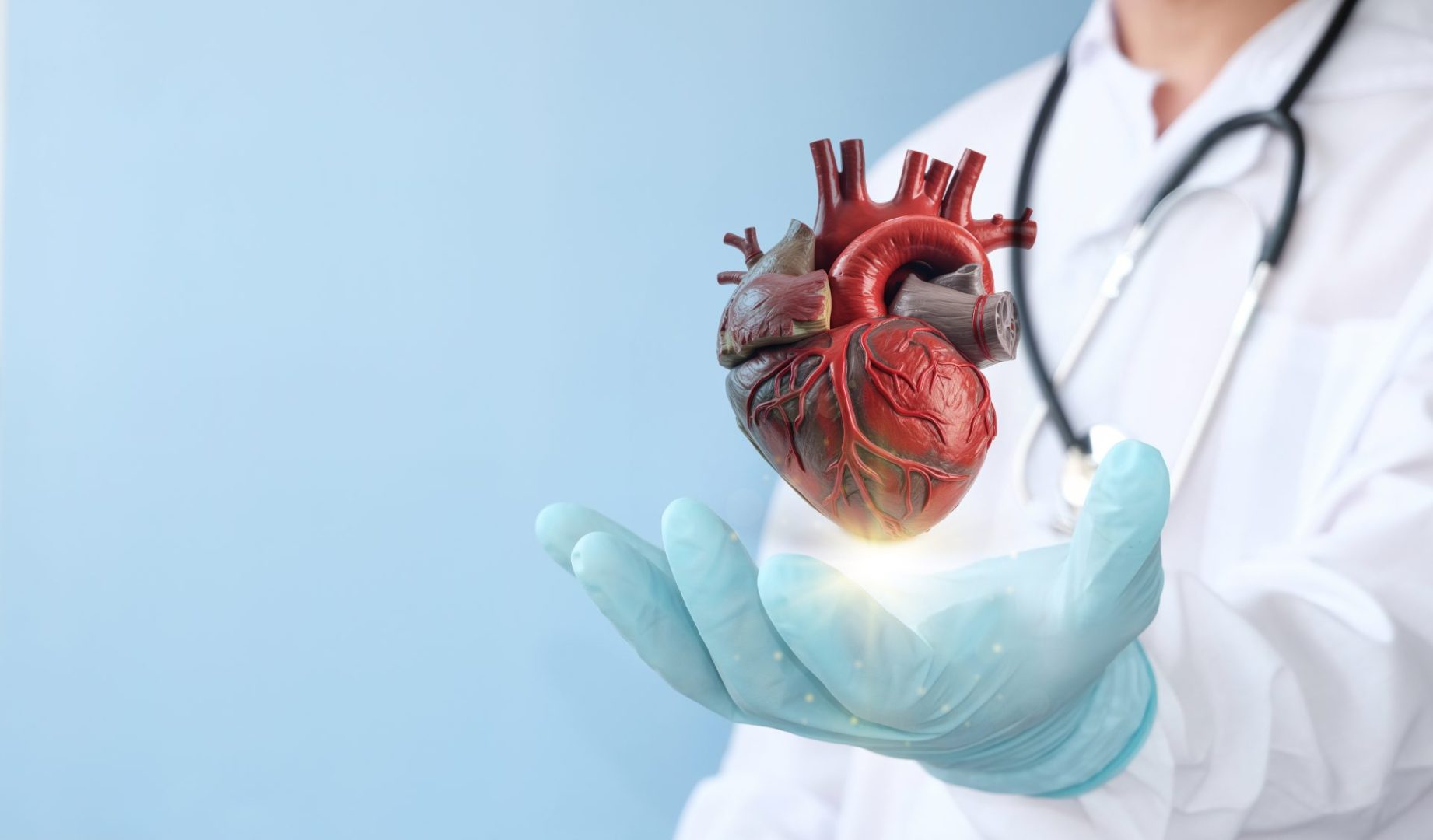Clogged heart arteries, medically known as coronary artery disease, represent one of the most serious cardiovascular conditions affecting millions of people worldwide. When arteries that supply blood to the heart muscle become narrowed or blocked by fatty deposits called plaque, the heart struggles to receive adequate oxygen and nutrients. Understanding the warning signs of arterial blockages can be life-saving, as early recognition often leads to prompt treatment that prevents heart attacks and other serious complications.
The development of arterial blockages typically occurs gradually over many years, with symptoms often appearing only when blockages become significant enough to restricted blood flow substantially. This silent progression makes awareness of warning signs particularly crucial, as many people remain unaware of their condition until a medical emergency occurs.
Heart arteries can become clogged through various mechanisms, primarily involving the accumulation of cholesterol, calcium, and other substances that form plaques along arterial walls. These deposits gradually narrow the arterial passages, reducing blood flow to the heart muscle and potentially causing the serious symptoms described below.
Understanding arterial blockages
The coronary arteries serve as the heart’s primary blood supply system, delivering oxygen-rich blood to the heart muscle itself. When these arteries become narrowed or blocked, the heart muscle cannot function properly, leading to various symptoms that serve as the body’s warning system.
Arterial blockages develop through a process called atherosclerosis, where fatty deposits accumulate along arterial walls over time. These deposits can grow larger and potentially rupture, forming blood clots that may completely block blood flow. This process often occurs without noticeable symptoms until blockages become severe.
The location and severity of arterial blockages determine the specific symptoms experienced. Blockages in different coronary arteries may cause varying symptom patterns, though the fundamental issue remains the same: inadequate blood supply to the heart muscle.
Risk factors contributing to arterial blockages
Multiple factors increase the likelihood of developing clogged heart arteries. High cholesterol levels, particularly elevated low-density lipoprotein cholesterol, contribute significantly to plaque formation. High blood pressure places additional stress on arterial walls, making them more susceptible to damage and plaque accumulation.
Diabetes affects blood vessels throughout the body, including coronary arteries, increasing the risk of blockage formation. Smoking damages arterial walls and accelerates plaque development, while physical inactivity and poor dietary choices contribute to multiple risk factors simultaneously.
Age and genetics also play important roles, with risk increasing naturally over time and certain genetic factors predisposing individuals to cardiovascular disease. Understanding these risk factors helps individuals recognize their personal likelihood of developing arterial blockages.
5 critical warning signs requiring immediate attention
1. Chest pain or discomfort during physical activity
Chest pain that occurs during exercise, climbing stairs, or other physical activities represents one of the most common and significant warning signs of clogged heart arteries. This pain, called angina, typically develops because the heart muscle requires more oxygen during physical exertion, but blocked arteries cannot deliver adequate blood supply.
The pain may feel like pressure, squeezing, fullness, or burning in the chest area. It often begins in the center of the chest and may radiate to the arms, neck, jaw, or back. The discomfort typically starts during activity and subsides with rest, though this pattern may vary among individuals.
Some people describe the sensation as feeling like an elephant sitting on their chest, while others experience it as a tight band around the chest. The pain may be accompanied by shortness of breath, sweating, or nausea, particularly during more severe episodes.
2. Unexpected shortness of breath
Difficulty breathing that occurs without apparent cause, especially during normal activities that previously caused no problems, may indicate inadequate blood flow to the heart. When the heart cannot pump efficiently due to reduced blood supply, fluid may accumulate in the lungs, causing breathing difficulties.
This shortness of breath may develop gradually over time or appear suddenly. It often worsens with physical activity and may be accompanied by fatigue or weakness. Some individuals notice difficulty breathing when lying flat, requiring multiple pillows to sleep comfortably.
The breathing difficulties may be subtle initially, perhaps noticed only during activities like climbing stairs or walking uphill. However, as arterial blockages progress, shortness of breath may occur with less strenuous activities or even at rest.
3. Unusual fatigue and weakness
Persistent fatigue that develops without obvious cause and doesn’t improve with rest may signal reduced blood flow to the heart and other organs. When the heart cannot pump blood effectively due to arterial blockages, the body’s organs and tissues receive inadequate oxygen, leading to feelings of exhaustion.
This fatigue often feels different from normal tiredness after physical activity or lack of sleep. It may be accompanied by a general sense of weakness or feeling “run down” that persists despite adequate rest. Daily activities that were once manageable may become surprisingly difficult.
The fatigue may worsen progressively over time, with individuals gradually reducing their activity levels to accommodate their decreased energy. This adaptation may mask the underlying problem, making the symptom seem less concerning than it actually is.
4. Pain or discomfort in arms, neck, jaw, or back
Discomfort that occurs in areas other than the chest may represent referred pain from the heart, particularly when it occurs during physical activity or stress. The heart shares nerve pathways with other areas of the body, causing pain signals to be felt in locations distant from the actual source.
Arm pain, particularly in the left arm, is commonly associated with heart problems, though both arms may be affected. The pain may feel like aching, numbness, or heaviness and often occurs alongside chest discomfort, though it may occasionally appear independently.
Jaw pain that develops during physical activity or stress may be particularly concerning, especially if it occurs without obvious dental or jaw problems. This pain may feel like a toothache or jaw muscle tension but follows patterns related to physical exertion rather than eating or jaw movement.
5. Dizziness or lightheadedness during activity
Feeling dizzy or lightheaded during physical activity may indicate that the heart cannot maintain adequate blood pressure and circulation due to arterial blockages. When the heart struggles to pump blood effectively, brain blood flow may be compromised, causing these symptoms.
This dizziness typically occurs during or immediately after physical exertion and may be accompanied by other symptoms like chest discomfort or shortness of breath. The sensation may range from mild lightheadedness to more severe dizziness that affects balance and coordination.
Some individuals experience near-fainting episodes during activities that previously caused no problems. These episodes may be brief but should be taken seriously, particularly when they occur repeatedly or in patterns related to physical exertion.
When symptoms require emergency care
Certain symptom patterns require immediate emergency medical attention rather than waiting for routine medical appointments. Chest pain that is severe, lasts more than a few minutes, or is accompanied by sweating, nausea, or shortness of breath may indicate a heart attack in progress.
Pain that doesn’t improve with rest or worsens over time should be evaluated immediately. Similarly, symptoms that occur at rest rather than only during activity may indicate more severe blockages requiring urgent treatment.
Any combination of the warning signs described above, particularly when they occur together or worsen rapidly, warrants immediate medical evaluation. Emergency medical services should be contacted without delay for severe symptoms.
The importance of early detection
Recognizing these warning signs early allows for medical evaluation and treatment before more serious complications develop. Many effective treatments exist for clogged heart arteries, ranging from lifestyle modifications and medications to surgical procedures when necessary.
Early detection often leads to better treatment outcomes and may prevent heart attacks, heart failure, or other serious complications. Regular medical checkups combined with awareness of these warning signs provide the best approach to maintaining heart health.
Medical evaluation typically involves various tests to assess heart function and identify arterial blockages. These may include electrocardiograms, stress tests, or imaging studies that provide detailed information about heart and arterial health.
Lifestyle factors supporting heart health
Maintaining a heart-healthy lifestyle can help prevent arterial blockages and support overall cardiovascular health. Regular physical activity, when approved by healthcare providers, helps maintain healthy blood flow and strengthens the heart muscle.
A balanced diet low in saturated fats, trans fats, and cholesterol supports healthy cholesterol levels and reduces the risk of plaque formation. Managing blood pressure through diet, exercise, and medication when necessary helps protect arterial walls from damage.
Avoiding tobacco products and limiting alcohol consumption further reduces cardiovascular risk. Managing stress through healthy coping mechanisms also supports overall heart health and may help prevent the progression of arterial disease.
The role of regular medical care
Regular medical checkups allow healthcare providers to monitor cardiovascular risk factors and detect problems early. Blood pressure measurements, cholesterol testing, and other assessments help identify individuals at higher risk for arterial blockages.
Healthcare providers can recommend appropriate screening tests based on individual risk factors and symptoms. These may include more detailed cardiac evaluations for individuals with concerning symptoms or high risk profiles.
Medications may be prescribed to manage risk factors such as high cholesterol, high blood pressure, or diabetes. These treatments can significantly reduce the risk of arterial blockages and their complications when used as directed.
Moving forward with awareness
Understanding these warning signs empowers individuals to seek appropriate medical care when needed. Early recognition of concerning symptoms allows for prompt evaluation and treatment, potentially preventing serious complications.
Remember that experiencing these symptoms doesn’t necessarily indicate clogged arteries, as many conditions can cause similar signs. However, given the serious nature of cardiovascular disease, any persistent or concerning symptoms warrant medical evaluation.
The key to optimal cardiovascular health lies in combining awareness of warning signs with regular medical care, healthy lifestyle choices, and prompt attention to concerning symptoms. With proper medical care and lifestyle management, individuals can maintain heart health and address cardiovascular concerns effectively.
Important Medical Disclaimer: This article is for educational purposes only and should not replace professional medical advice. Anyone experiencing concerning symptoms should seek immediate medical attention, especially for chest pain or other heart-related symptoms.















